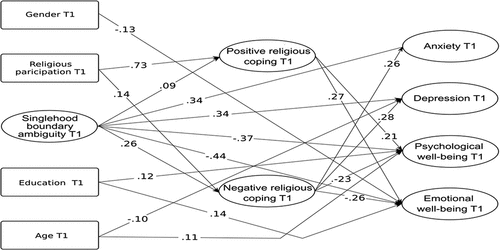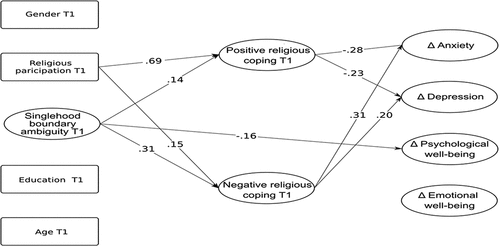Figures & data
Table 1. Sample characteristics of the total sample at Time 1 and Time 2 and as a function of attrition rate between time 1 and time 2.
Figure 1. Model 1 including positive and negative religious coping at Time 1 as mediators in the links between singlehood boundary ambiguity and anxiety, depression, emotional and psychological well-being at Time 1.

Table 2. Fit indices for models including four latent variables in study 2.
Supplemental Material
Download MS Word (76.5 KB)Supplemental Material
Download MS Word (76.5 KB)Data availability statement
The data that support the findings of Study 1 are not publicly available to honor the participants’ individual privacy but are partially available from the corresponding author, KA, on reasonable request.
The data that support the findings of Study 2 are openly available in the Open Science Framework at https://osf.io/vb6kz/?view_only=2c96e532f6ef48ff95b0872c5184814a

